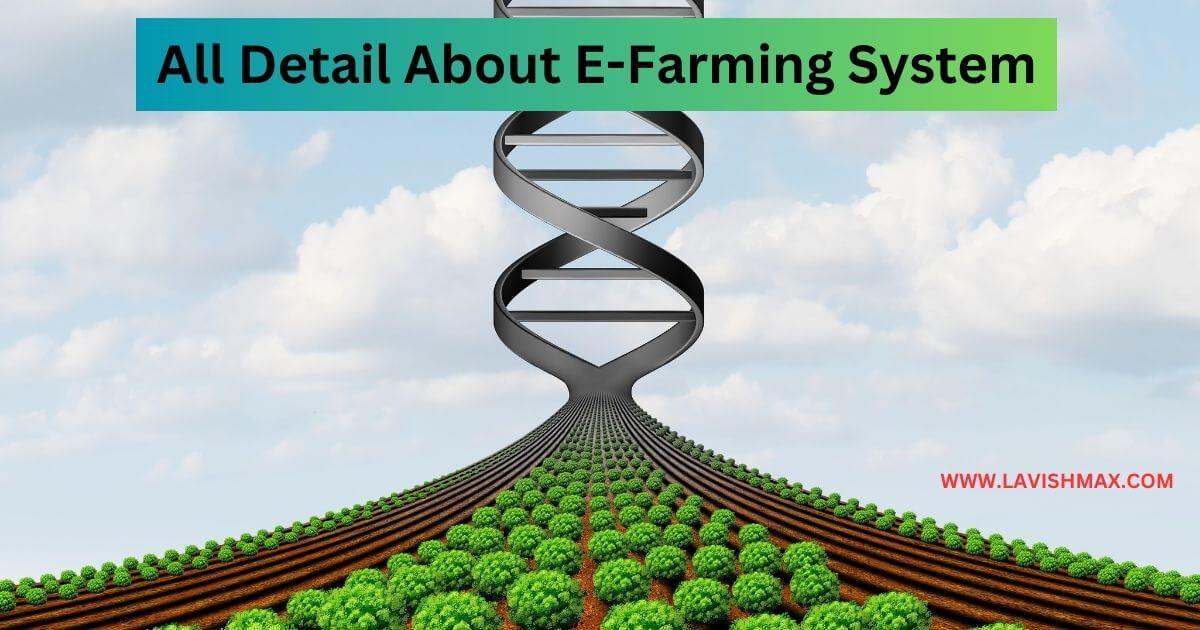E-farming, an innovative approach to traditional agriculture, revolutionizes the agricultural sector by integrating technology with farming practices. This blog post aims to delve into the realm of E-Farming, shedding light on its significance, advantages, challenges, best practices, case studies, and prospects.
Introduction
E-farming, an amalgamation of agriculture and technology, signifies the utilization of digital advancements in farming practices. It encompasses various technological interventions to enhance agricultural productivity and efficiency, contributing to sustainable food production.
E-farming holds immense importance in today’s world due to its ability to optimize resources, increase productivity, and address challenges faced by traditional agriculture. Its integration of smart technology aids in precision farming, resource management, and data-driven decision-making.
Understanding E-Farming
Evolution of E-Farming
E-farming has evolved significantly, leveraging advancements in IoT (Internet of Things), AI (Artificial Intelligence), and data analytics. It has transformed from manual farming techniques to automated, data-centric processes, fostering enhanced yield and reduced resource wastage.
Components of E-Farming
E-farming encompasses various components, including IoT sensors, drones, AI-driven analytics, and automated machinery. These elements work cohesively to monitor soil health, optimize irrigation, manage crop health, and facilitate predictive analysis for better decision-making.
Advantages of E-Farming
Economic Benefits
E-farming offers increased profitability to farmers through optimized resource utilization, reduced operational costs, and improved crop yields. Its data-driven approach minimizes risks, enabling better financial planning and investment decisions.
Environmental Impact
E-farming minimizes environmental impact by employing precise resource management and sustainable farming practices. Reduced water usage, minimal chemical application, and improved soil health contribute to eco-friendly agricultural practices.
Social Contribution
E-farming plays a pivotal role in ensuring food security by enhancing agricultural productivity. It promotes inclusivity by providing opportunities for small-scale farmers to access technology and markets, fostering socio-economic development.
Challenges in E-Farming
Technological Challenges
The adoption of E-Farming faces challenges related to technological infrastructure, access to reliable connectivity, and high initial investment costs. Ensuring technological literacy among farmers remains a hurdle in some regions.
Market and Infrastructure Challenges
Limited market access, inadequate storage facilities, and fragmented supply chains challenge the widespread implementation of E-Farming practices. Addressing these infrastructural gaps is crucial for its scalability.
Best Practices in E-Farming
Utilizing IoT and AI
The integration of IoT devices and AI-driven analytics enables real-time monitoring of crop conditions, pest management, and automated decision-making. These technologies empower farmers with actionable insights for precise agricultural management.
Sustainable Farming Techniques
E-farming encourages sustainable practices like crop rotation, organic farming, and precision irrigation. These methods contribute to soil conservation, biodiversity preservation, and reduced environmental impact.
Marketing Strategies for E-Farming
Effective marketing strategies leveraging digital platforms, e-commerce, and direct-to-consumer models enhance market access for E-Farming produce. Building consumer awareness and trust is pivotal for successful market penetration.
Case Studies of Successful E-Farming
Example 1: Innovative E-Farming Initiatives
A case study from India showcases a cooperative of small-scale farmers adopting E-Farming practices. By utilizing IoT-based soil sensors and weather forecasting apps, these farmers witnessed a 30% increase in crop yield and a significant reduction in resource usage.
Example 2: Transformative E-Farming Stories
In Australia, a family-owned farm integrated AI-powered drones for crop monitoring and disease detection. This implementation led to timely intervention, resulting in a 40% decrease in crop loss, demonstrating the efficacy of technology in agriculture.
Future of E-Farming
Emerging Technologies
The future of E-Farming holds promise with advancements in robotics, blockchain, and predictive analytics. These technologies are poised to further revolutionize farming practices, offering innovative solutions for sustainable agriculture.
Potential Growth Areas
E-farming’s potential growth spans diverse areas, including vertical farming, urban agriculture, and smart farming solutions. These avenues present opportunities for increased food production in constrained spaces and resource-limited environments.
Do you want to accept the e-farming Challenge
Conclusion
In conclusion, E-Farming stands as a transformative approach that revolutionizes traditional agriculture by harnessing technological innovations. Its manifold advantages in increasing productivity, ensuring sustainability, and addressing socio-economic challenges make it a pivotal driver in the future of farming.
FAQs
- What are the primary benefits of E-Farming?
- How can E-Farming tackle food security issues?
- Is E-Farming applicable in all regions?
- What investment is needed to start E-Farming?
- Can traditional farmers transition to E-Farming?
- What role does government policy play in E-Farming adoption?
